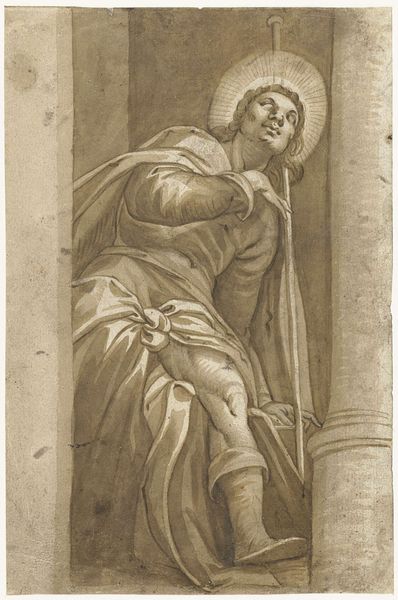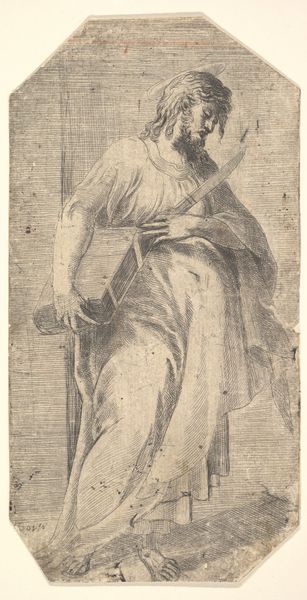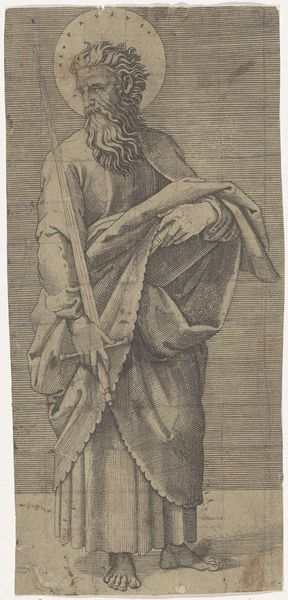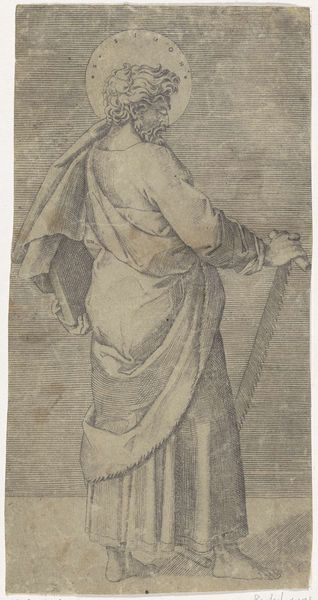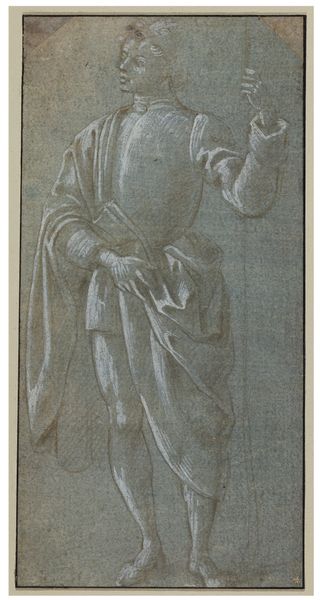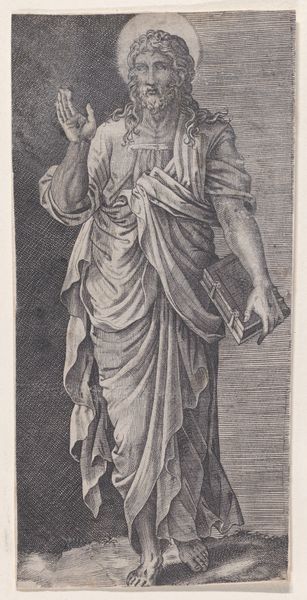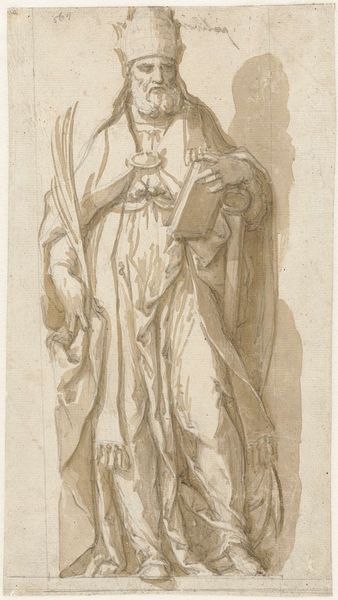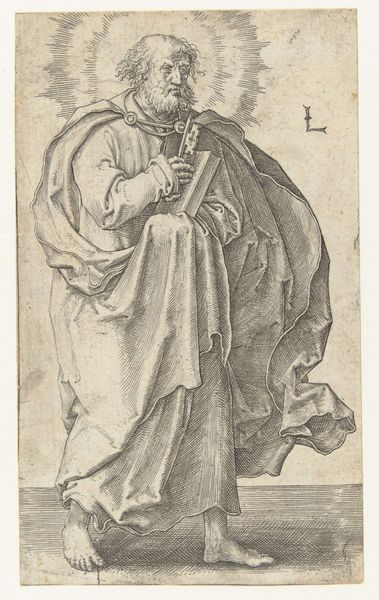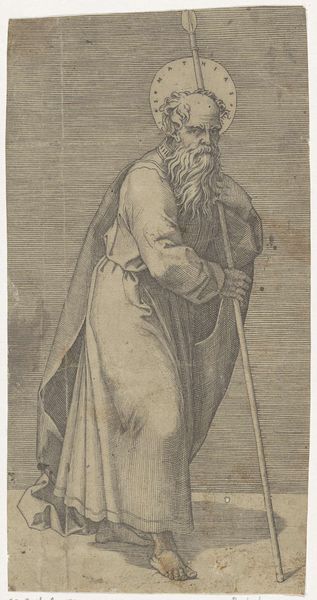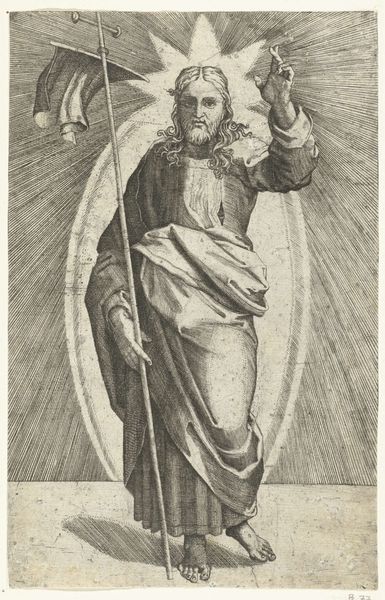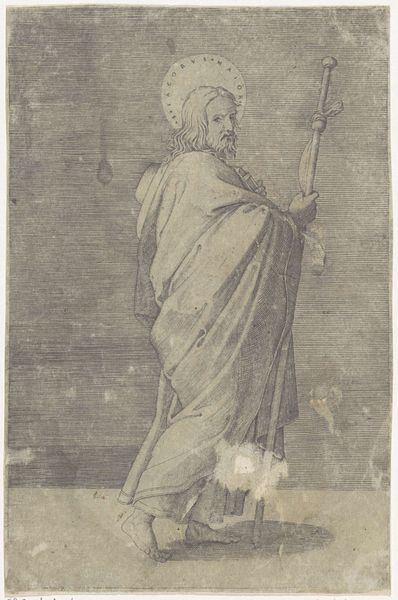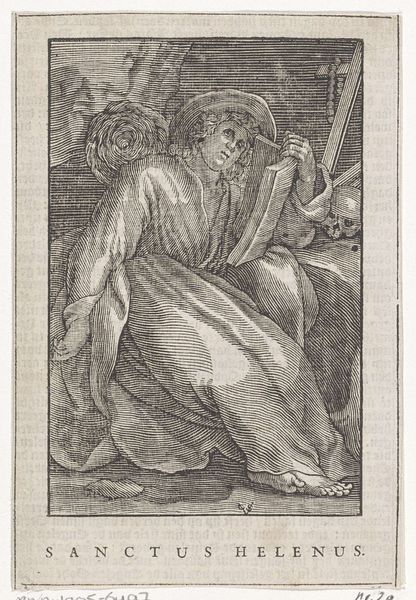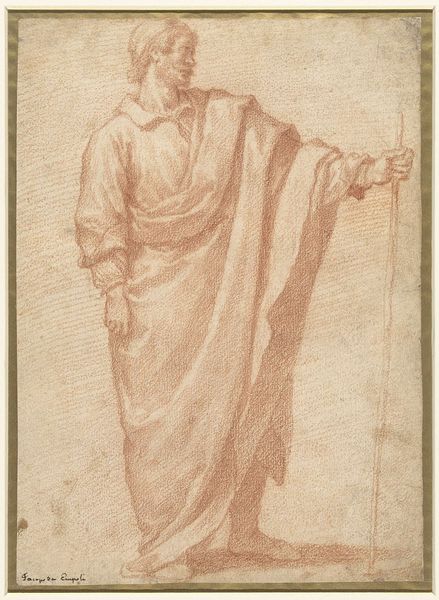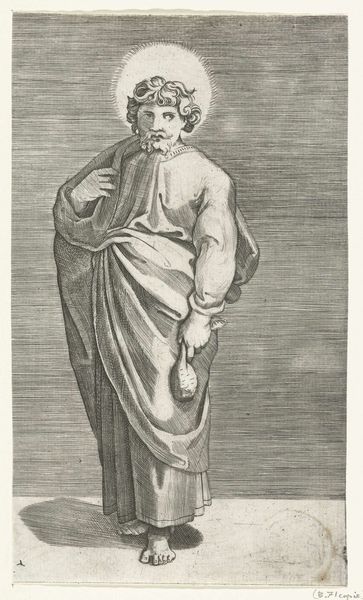
print, engraving
# print
#
pencil sketch
#
figuration
#
history-painting
#
italian-renaissance
#
engraving
Dimensions: height 212 mm, width 140 mm
Copyright: Rijks Museum: Open Domain
Curator: Here we have "Christus als Salvator Mundi," or Christ as Savior of the World, a print created by Marcantonio Raimondi sometime between 1517 and 1527. It's an engraving, currently residing at the Rijksmuseum. What do you make of it? Editor: There's something delicate, almost hesitant, about this Christ. The lines are so fine; it’s as if he’s sketched in light rather than carved in metal. And the luminosity! You can almost feel the divine radiation. Curator: That luminosity, that’s achieved through the engraving technique. Raimondi was known for his skill in translating the texture and form of paintings into print. Look at how he uses cross-hatching to create shadows and volume, playing with density to evoke a sense of the divine. It is amazing how much depth can be created out of what's essentially very small physical labor in applying fine marks in an unforgiving material! Editor: I suppose you’re right, thinking of each individual pass in the metal and using labor in this repetitive process that creates shadow or light is really amazing. Is it accurate to describe it as mass production since there might be many prints of this work and the artist who is spending so much effort on carving the metal is far from enjoying a status afforded to high art makers? Curator: The line between reproductive printmaking and original art gets blurry here. Raimondi disseminated designs of artists like Raphael to a wider audience but at the same time elevated the printmaking to a form of art. Was the process diminishing artistry because it allowed for repeatability or did it make possible art available to many people for personal reflection? Editor: It is not clear that it is either/or. Looking again at those radiant lines, radiating from his halo – the whole image is really cleverly designed for devotional engagement in a context where even if it might be consumed, it creates an interesting economy for making labor visual. Curator: An important insight. Engravings like these democratized art, enabling wider accessibility while creating interesting conversations about originality, craft and labour in art history. Thanks!
Comments
No comments
Be the first to comment and join the conversation on the ultimate creative platform.
